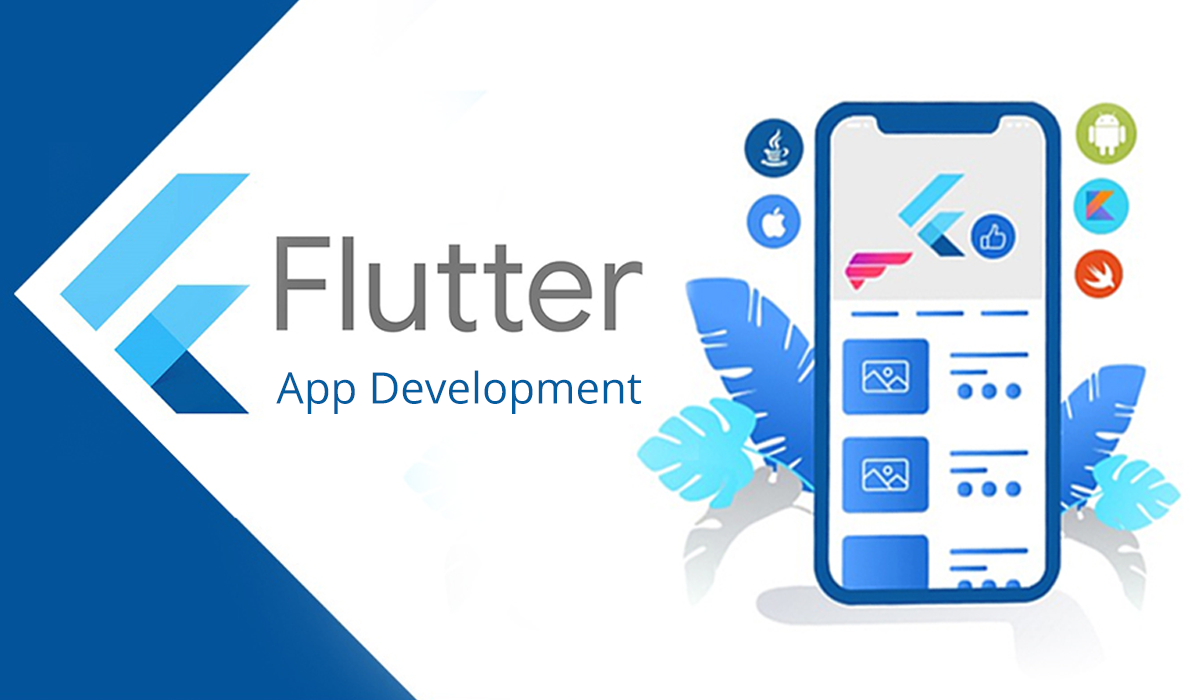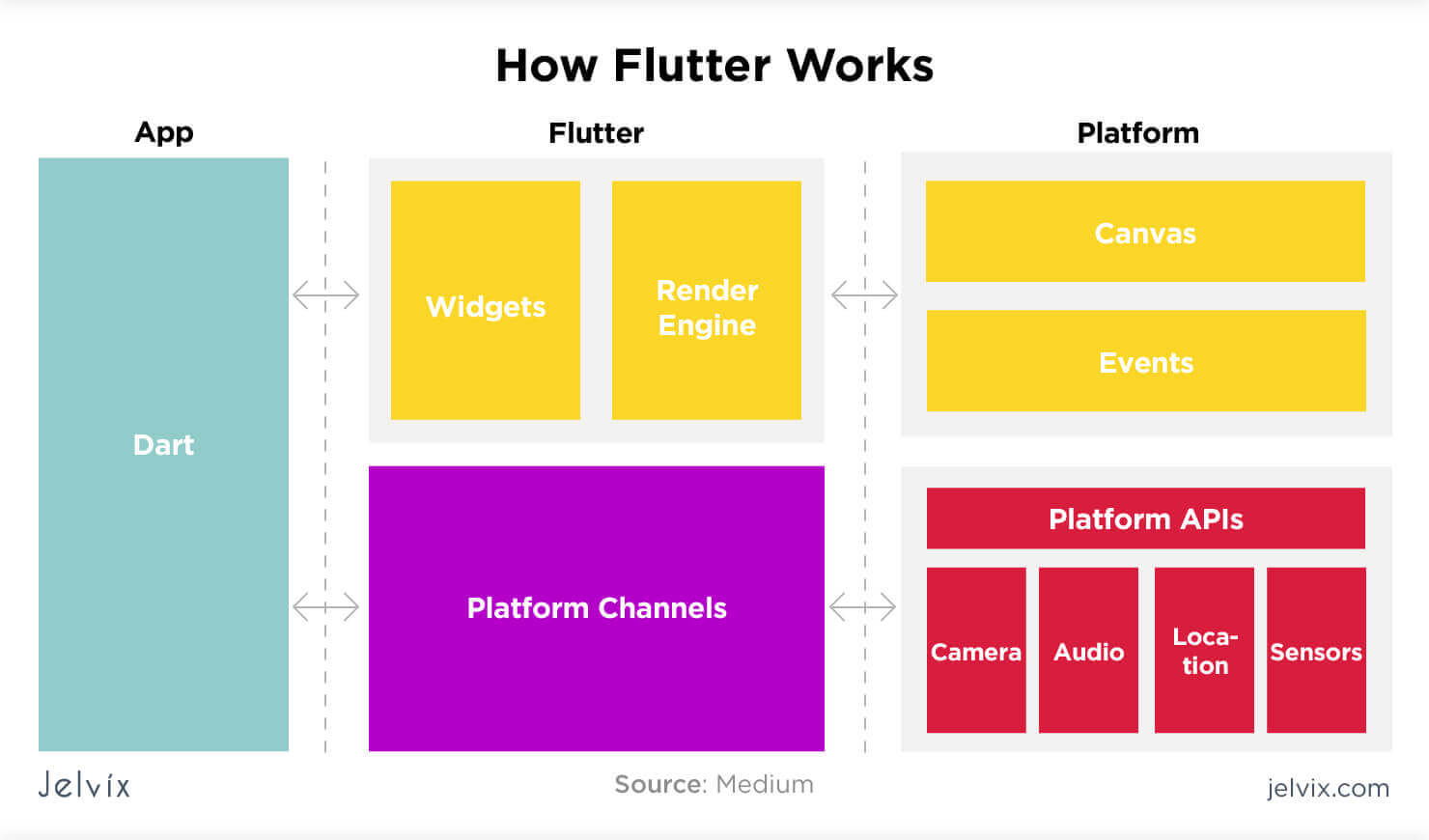What is Flutter and how does it work?
Over the years, Flutter has become an increasingly popular mobile application development platform by helping developers build mobile applications quickly and efficiently. It uses the Dart programming language, a modern and easy-to-learn language, and provides a set of custom user interface (UI) components and interaction design guidelines. Flutter has become a complete game-changer; in this post, we will answer the question “What is Flutter?” by studying its features, benefits, and why you should consider learning and adopting it in your own business venture!
I. What is Flutter?
Google’s Flutter software development kit (SDK) is an open-source framework for developing natively built mobile, web, and desktop applications from a single codebase. It uses the Dart programming language, which Google also created.
Flutter provides developers with a comprehensive set of pre-designed tools and utilities for creating visually beautiful, high-performance, responsive user interfaces. Its responsive foundation allows a smooth and fast development process. The hot reload functionality will enable developers to see the results of their code changes in the application immediately, encouraging productivity and iterative development.

Flutter’s capacity to facilitate cross-platform application development is a significant asset. Developers may publish their code once and use it across many platforms, including iOS, Android, Windows, macOS, Linux, and the web. As a result, there is no longer a need for distinct codebases for each platform, which speeds up the development process.
Flutter’s versatility, performance, and user-friendliness have helped it become quite well-liked among developers. It has a thriving developer community and a large selection of plugins and packages, reinforcing its status as a flexible and reliable option for application development.
II. Business Benefits of Flutter App Development
Flutter app development is a popular option for cross-platform applications since it benefits companies with swifter development, cost efficiency, good performance, and broad platform support.
- Single Codebase
With Flutter, businesses can create apps that run on iOS, Android, web, desktop, and others, using only one codebase. This greatly lowers the time and work needed for development, as there’s no need to keep different codebases for different platforms.
- Faster Time to Market
Flutter’s hot reload feature allows developers to instantly view the effects of their code changes on the app, making it easier to experiment and refine the design. This reduces the time needed to develop the app and helps businesses launch their products faster, gaining an edge over their competitors.
- Native-like Performance
A rendering engine of its own is used by Flutter, and platform-specific UI components are not relied on by it. This allows native-like performance to be delivered by apps built with Flutter, ensuring smooth animations, fast response times, and excellent user experiences are provided.
- Attractive UI/UX Design
A rich set of pre-designed widgets and customization options is provided by Flutter, which enables businesses to create user interfaces that are appealing and engaging. By doing so, brand identity is built, user experience is enhanced, and user satisfaction is increased.
- Cost-effective Development
Flutter app development can be less expensive for companies because it uses a single codebase and eliminates the need for platform-specific developers. The application’s reach and capabilities are increased while development and maintenance costs are reduced.
- Wide Platform Support
One of the advantages of Flutter is that it can run on various platforms, such as mobile, web, desktop, and embedded devices. This means that businesses can use Flutter to create applications that can appeal to a wider range of users and work on different devices.
- Growing Community and Ecosystem
The developer community of Flutter is lively and expanding fast, which provides businesses with a lot of support, resources, and third-party packages. This allows them to use the shared wisdom and skills of the community to solve problems and create powerful applications.
Learn More On:
III. How does Flutter Work?
Generate high-quality native apps for iOS and Android with the Flutter mobile app SDK. With Google’s new fuchsia operating system, it’s also the primary method for creating cross-platform applications.
The Flutter Framework makes it simple to create user interfaces that are attractive, quick, and responsive. Additionally, the framework is expandable, making it simple to include new features and functions.
Working with a “widget” is what you’ll do when making a Flutter app. The fundamental building blocks of Flutter apps are widgets, which are used to make the app’s graphical elements (such as buttons and text) and its functional elements (such as Stateless Widgets).
Widgets come in two varieties: stateless widgets and stateful widgets. Stateless Widgets, as their name suggests, lack any internal state (or simply “state”). These widgets for buttons or text are the most basic and popular ones.

On the other hand, stateful widgets have an internal state that may change over time and is reflected in the widget’s appearance and behavior. Users often employ stateful widgets as animation controllers or user input fields.
With the Dart programming language, creating Stateless and Stateful Widgets is simple. The Dart Analyzer and the Vibration Tester are just two examples of the many different development tools you can utilize to assist in development.
Conclusion
Flutter is a powerful and versatile framework for creating cross-platform applications with a single codebase. It offers many benefits for businesses, such as faster development, cost efficiency, native performance, and customizable widgets. Flutter is suitable for developing applications of any complexity and scale, from simple utility apps to enterprise-level solutions. If you are looking for a reliable and flexible option for your app development needs, Flutter might be the right choice for you.
Let’s talk
A consultation with the Client Relationship Manager, who represents TECHVIFY, without any commitment from your side, will give you:
- Structured and clear vision of your future application
- Information about how our software development company guarantees 100% on-time and on-budget delivery
- Recommendations for choosing the tech stack
- Advice on further steps
- Business-side recommendations
- Rough project estimation on software development
TECHVIFY is right where you need. Contact us now for further consultation:





